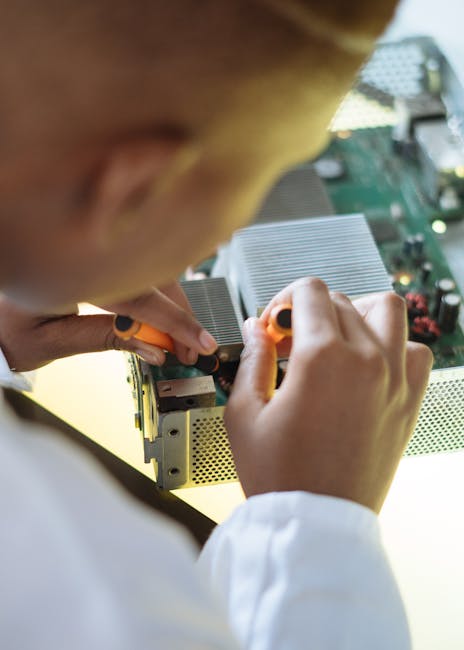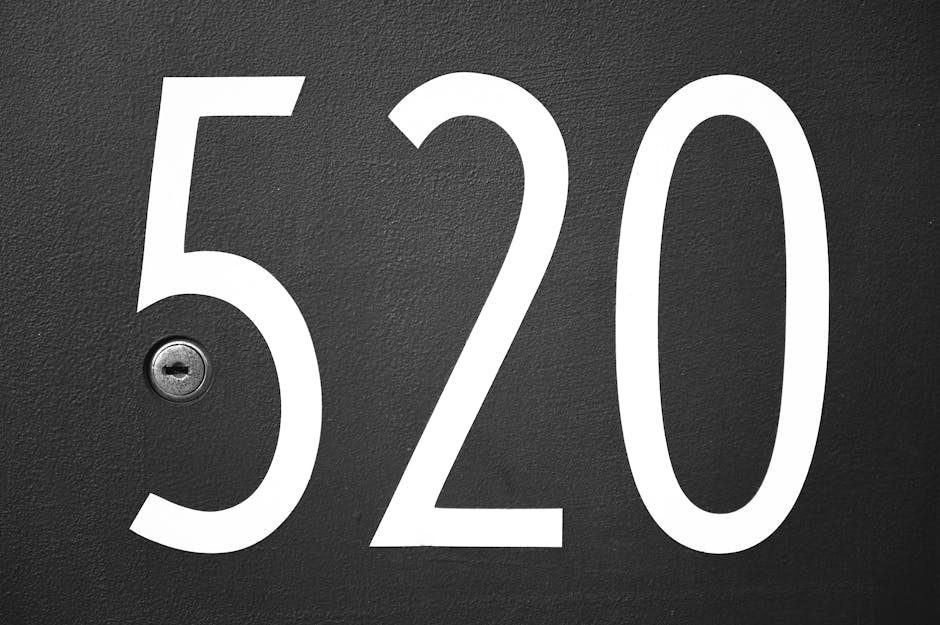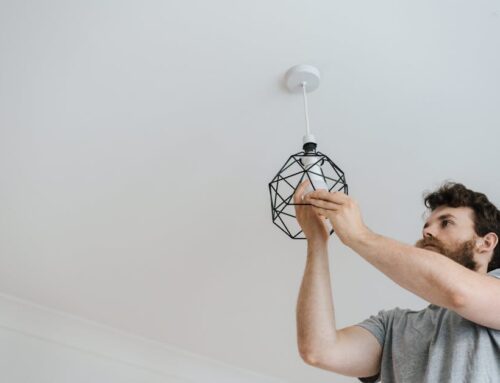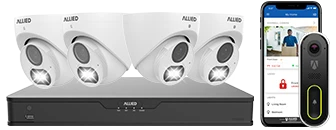Introduction to Home Security Monitoring Services
Home security monitoring services have become a crucial aspect of safeguarding residential properties against various threats, including burglary, fire, and medical emergencies. With advancements in technology, these services offer real-time monitoring and rapid response, providing homeowners with peace of mind and enhanced protection.
The concept of home security monitoring involves the use of electronic devices, such as cameras, sensors, and alarms, to detect unusual activities or potential dangers. When a threat is identified, the system alerts the homeowner and, depending on the configuration, can also notify a professional monitoring center. This center then takes appropriate actions, whether it’s contacting emergency services or dispatching security personnel.
Statistics from the Federal Bureau of Investigation (FBI) highlight the importance of home security systems. According to their data, properties without security systems are up to 300% more likely to be targeted by burglars. Moreover, the Insurance Information Institute (III) states that many insurance companies offer discounts on homeowner policies for properties equipped with security systems, which can serve as a financial incentive to invest in these services.
Home security monitoring services come in various forms, ranging from basic surveillance to comprehensive systems that include environmental hazard detection and medical alert features. The emergence of smart home technology has further revolutionized the sector, allowing for integration with other household devices and enabling remote control and monitoring via smartphones and other mobile devices. This interoperability has made it easier for homeowners to manage their security systems and ensure their properties are protected at all times.
While the initial investment in a home security monitoring service may seem significant, the potential reduction in risk and potential insurance savings can make it a worthwhile expenditure. By understanding the fundamental aspects of these services, homeowners can make informed decisions about the type and extent of security measures best suited for their needs.
Types of Home Security Systems
Home security systems come in various forms, each designed to meet different security needs. Broadly, these systems can be categorized into monitored and unmonitored systems. Understanding these types will help you make an informed decision that best suits your home’s security requirements.
Monitored Systems
Monitored home security systems are continuously observed by a professional security team. When an alarm is triggered, the monitoring center is alerted and can dispatch emergency services if necessary. These systems often come with features such as smoke detectors, carbon monoxide detectors, and motion sensors.
- 24/7 Surveillance: Constant monitoring ensures any security breach is addressed immediately.
- Emergency Response: Rapid dispatch of police, fire, or medical services upon alert.
- Comprehensive Coverage: Integrated with various types of sensors for all-around protection.
Unmonitored Systems
Unmonitored home security systems rely on the homeowner to respond to alerts, typically through a smartphone app. While these systems are often less expensive, their effectiveness depends heavily on the owner’s availability and ability to act quickly.
- Cost-Effective: Generally less costly as there are no monthly monitoring fees.
- Self-Reliance: The homeowner is responsible for alerting authorities if needed.
- Remote Access: Often come with mobile apps for real-time monitoring and control.
Below is a comparison table summarizing the key differences between monitored and unmonitored systems:
| Feature | Monitored Systems | Unmonitored Systems |
|---|---|---|
| Surveillance | 24/7 Professional Monitoring | Self-Monitoring |
| Emergency Response | Automatic Dispatch of Services | Manual Notification Required |
| Cost | Higher (Monthly Fees) | Lower (No Monthly Fees) |
In addition to these primary categories, home security systems can also be differentiated based on the technology they use:
- Wired Systems: These require a hardwired connection and are typically more reliable, though installation can be more complex.
- Wireless Systems: Easier to install and more flexible but may be susceptible to interference.
- Smart Home Integration: Advanced systems that can connect with other smart home devices for greater control and automation.
Determining the right type of home security system involves analyzing your specific security needs, budget, and preferences. Whether you opt for a monitored or unmonitored system, the goal is to ensure that your home is as secure as possible.
Key Features of Effective Home Monitoring Services
When considering home monitoring services, understanding key features is essential for ensuring effectiveness and reliability. The following sections delve into crucial aspects that make a home monitoring service robust and dependable.
24/7 Monitoring
An effective home monitoring service operates round the clock. Regardless of the time of day, the system should be able to detect and respond to any security breach. This continuous monitoring ensures that any potential threats are immediately addressed, minimizing risks.
Real-Time Alerts
Real-time alerts are a cornerstone feature of modern home monitoring systems. These alerts can be sent directly to your mobile device or email, keeping you informed about any security incidents as they happen. This prompt notification allows
for quick action, whether it’s contacting the authorities or checking camera feeds.
Remote Access
Remote access allows homeowners to monitor and control their security system from anywhere. Using a smartphone app or web portal, users can arm or disarm the system, view live camera feeds, and receive system status updates. This feature provides peace of mind and convenience, especially for frequent travelers or busy individuals.
Integration with Smart Home Devices
Integration with smart home devices enhances the functionality of a home monitoring system. For example, connecting the system with smart lights, locks, and thermostats can automate responses to security events. A well-integrated system can lock doors and turn on lights automatically if a security threat is detected, thereby deterring potential intruders.
Professional Installation and Support
While some systems offer DIY installation options, professional installation ensures that all components are correctly installed and optimized for performance. Additionally, access to professional support helps resolve any technical issues that may arise, ensuring that the system operates smoothly.
Data Privacy and Security
Data privacy and security are crucial when dealing with home monitoring services. It’s important to choose a service that uses advanced encryption and secure data storage to protect your personal information. This includes safeguarding video footage and alert logs from unauthorized access.
Table: Essential Features of Home Monitoring Services
| Feature | Description |
|---|---|
| 24/7 Monitoring | Continuous surveillance to detect and respond to security breaches at any time. |
| Real-Time Alerts | Immediate notifications of security incidents sent to a user’s mobile device or email. |
| Remote Access | Ability to monitor and control the system from remote locations via apps or web portals. |
| Smart Home Integration | Connecting with other smart devices for automated responses to security events. |
| Professional Installation | Expert setup to ensure optimal performance and troubleshooting support. |
| Data Privacy and Security | Advanced encryption and data protection measures to safeguard personal information. |
Benefits of Professional Monitoring Services
Professional monitoring services offer several significant benefits that enhance home security and provide homeowners with peace of mind.
24/7 Surveillance
One of the most critical advantages of professional monitoring services is continuous surveillance, which operates around the clock. This constant vigilance ensures that any suspicious activity is detected and addressed promptly, even when homeowners are not present.
Rapid Response
Professional monitoring services offer a rapid response to emergencies. When an alarm is triggered, the monitoring center quickly assesses the situation and dispatches the necessary emergency services. This swift action can be crucial in situations such as break-ins, fires, or medical emergencies.
Expertise and Reliability
Monitoring services are staffed by trained security professionals who are skilled in interpreting alarm signals and determining the appropriate response. This expertise reduces the risk of false alarms and ensures that genuine threats are handled efficiently.
Additional Security Measures
Many professional monitoring services offer additional security features such as video surveillance, environmental monitoring (e.g., smoke or carbon monoxide detection), and mobile alerts. These features provide comprehensive protection beyond basic intrusion detection.
Insurance Benefits
Investing in a professional monitoring service can often lead to lower home insurance premiums. Insurance companies recognize the increased security provided by these services and may offer discounts on policies as a result.
Table: Benefits Overview
| Benefit | Description |
|---|---|
| 24/7 Surveillance | Continuous monitoring that ensures constant protection |
| Rapid Response | Immediate action is taken in case of emergencies |
| Expertise and Reliability | Trained professionals manage and respond to alerts |
| Additional Security Measures | Includes video surveillance and environmental monitoring |
| Insurance Benefits | Potential for lower home insurance premiums |
Overall, professional monitoring services provide a robust layer of security that can deter potential threats and ensure prompt intervention when necessary. This comprehensive approach to home security makes it a valuable investment for any homeowner looking to enhance their home’s protection.
Choosing the Right Home Security Provider
Choosing the right home security provider is a crucial step in enhancing the safety of your home. With a vast array of options available in the market, it’s essential to assess different providers based on several critical factors. This chapter will guide you through these factors to help you make an informed decision.
Reputation and Reliability
One of the first aspects to consider is the provider’s reputation. Look for companies with a proven track record of reliability and customer satisfaction. Reputable providers are likely to offer consistent service and have a history of effectively resolving issues.
Check for customer reviews and ratings on independent websites, and consider seeking recommendations from friends or family members who have used monitoring services.
Range of Services Offered
Evaluate the range of services that each provider offers. A comprehensive home security solution should include:
- Intrusion detection: Sensors and alarms for doors and windows.
- Surveillance cameras: Indoor and outdoor cameras for real-time monitoring.
- Environmental monitoring: Smoke, carbon monoxide, and flood detectors.
- Smart home integration: Compatibility with home automation devices for seamless control.
Technology and Equipment
Assess the technology and equipment provided by each company. Modern home security systems should incorporate advanced technology such as high-definition cameras, motion detection, and remote access through mobile apps. Ensure that the equipment is of high quality, durable, and user-friendly.
Monitoring and Response Time
The effectiveness of a home security provider is largely dependent on their monitoring and response capabilities. Inquire about:
- Monitoring hours: Ensure 24/7 monitoring services.
- Response time: The speed at which they respond to alerts and emergencies.
- Communication methods: How they notify you of incidents (e.g., phone call, text, email).
Reliable providers should offer prompt response times and a variety of communication methods to ensure you are immediately informed of any security breaches.
Customer Support
Customer support is another critical factor. Consider the availability and quality of customer service. Reliable providers should offer multiple support channels, including phone, email, and live chat, and have knowledgeable representatives who can assist with inquiries and technical issues.
Pricing and Contract Terms
Finally, review the pricing structures and contract terms. While pricing can vary significantly, it is important to consider:
- Initial costs: Installation fees and equipment costs.
- Monthly fees: Ongoing monitoring service charges.
- Contract terms: Length of service contracts and cancellation policies.
Choose a provider that offers transparent pricing, flexible contract terms, and consider any additional costs that may be incurred.
By carefully evaluating these factors, you can choose a home security provider that best meets your needs and ensures the safety and security of your home.
Installation and Setup Process
Installing and setting up a home security monitoring system can seem daunting, but following a systematic process ensures that you maximize the effectiveness of your system. This chapter provides a step-by-step guide to help you through the installation and setup process of a home security monitoring system.
1. Planning and Assessment:
- Start by identifying the critical areas of your home that require surveillance, such as entry points (doors and windows), yards, and any areas with valuable possessions.
- Determine the types of sensors and cameras needed based on your specific security requirements and the layout of your home.
- Make a rough sketch of your home to decide on the exact locations for installing cameras and sensors.
2. Gathering Tools and Equipment:
- Check the installation instructions provided by your security system provider to ensure you have the necessary tools (e.g., drills, screwdrivers, and cable management tools).
- Verify that you have all components of the security system, including cameras, sensors, control panel, and any additional equipment like Wi-Fi extenders if needed.
3. Installing Cameras and Sensors:
- Mount cameras at an elevated height, ideally out of reach, to cover a wide area. Ensure they are protected from weather elements if placed outdoors.
- Install door and window sensors at entry points, and ensure they are aligned correctly so the circuit closes when the point is sealed.
- Use motion detectors in high-traffic areas or rooms containing valuable items. Adjust sensitivity settings to avoid false alarms from pets or minor movements.
4. Setting Up Control Panel and Connectivity:
- Place the control panel in a central, easily accessible location within your home. This should also be a discrete location to avoid tampering.
- Connect the control panel to your home’s Wi-Fi network or a dedicated network connection for seamless monitoring and alerts.
- Test all devices’ connectivity with the control panel to ensure that they are properly synchronized.
5. Configuring the System:
- Follow the instructions to create user accounts and set up authentication methods (such as key codes or biometric access).
- Define the monitoring zones and specify alert preferences for different types of activities (e.g., instant alerts for break-ins and summary alerts for general activity).
- Integrate with mobile apps for real-time monitoring and control while you are away.
6. Testing and Final Adjustments:
- Conduct a thorough walkthrough to test each sensor and camera, ensuring they trigger alerts appropriately.
- Adjust camera angles, sensor positions, or sensitivity settings based on your initial test results.
- Simulate different scenarios (such as opening doors or triggering motion sensors) to verify that the system responds as expected.
7. Professional Assistance:
- If any issues arise during installation, consider reaching out to professional installers who can provide expertise and ensure optimal setup.
- Many security system providers offer installation packages; utilizing these services could save time and ensure that the system is installed correctly.
Adhering to these steps ensures that your home security monitoring system is installed efficiently and operates effectively, providing peace of mind and robust security for your home.
Evaluating the Effectiveness of Your Home Security System
Evaluating the effectiveness of your home security system is a critical step to ensure that the system you have in place is operating optimally and providing the protection you expect. This involves regular assessment and updates based on the latest security advancements and your evolving needs.
Regular Maintenance and Testing
Regular maintenance and testing are crucial to keep your home security system functioning correctly. This includes checking all sensors, cameras, and alarms to ensure they are operational:
- Sensors: Verify that door and window sensors are responding accurately to openings and closings.
- Cameras: Ensure cameras are capturing clear footage and that the field of view covers the desired areas.
- Alarms: Test alarms and sirens to confirm that they trigger as expected in case of a breach.
Many security services offer periodic professional maintenance, which can help identify and resolve potential issues before they compromise your security.
System Updates and Upgrades
Technology in home security is continuously evolving. Regularly updating your system’s software can provide enhanced features and better security protocols. Additionally, consider hardware upgrades to newer, more efficient models when they become available.
Some common upgrades include:
- High-definition cameras: For better video quality and more detailed footage.
- Smart sensors: Enhanced sensors that integrate with smart home systems for automated responses.
- Advanced control panels: Modern control panels with touchscreens and more intuitive interfaces.
Reviewing Security Breaches
In the event of a security breach, review the incident thoroughly to understand how it occurred and what can be improved to prevent future breaches. Consider the following aspects:
- Entry Points: Identify how the intruder accessed the property and reinforce those areas with additional security measures if necessary.
- System Response: Evaluate the response time of your security system and the monitoring service. Ensure that notifications were received promptly and that authorities were contacted swiftly.
- Recording and Analysis: Analyze camera footage and sensor logs to identify weaknesses in your current setup.
Customer Feedback and Reviews
Gather feedback from family members or other household occupants about their experience with the security system. Their insights can reveal practical issues that may not be immediately obvious, such as ease of use or false alarms.
Additionally, monitor reviews and testimonials from other users of the same security service. This can provide an external perspective on common issues and effective solutions.
Consulting Security Experts
Engage with security professionals or the customer support team from your security provider to perform a comprehensive evaluation of your system. They can offer tailored advice and suggest enhancements based on the latest industry standards and threat intelligence.
In summary, regularly evaluating your home security system is essential for maintaining its effectiveness. Through consistent maintenance, timely updates, thorough reviews of any breaches, and use of feedback, you can ensure your home remains well-protected against potential threats.













